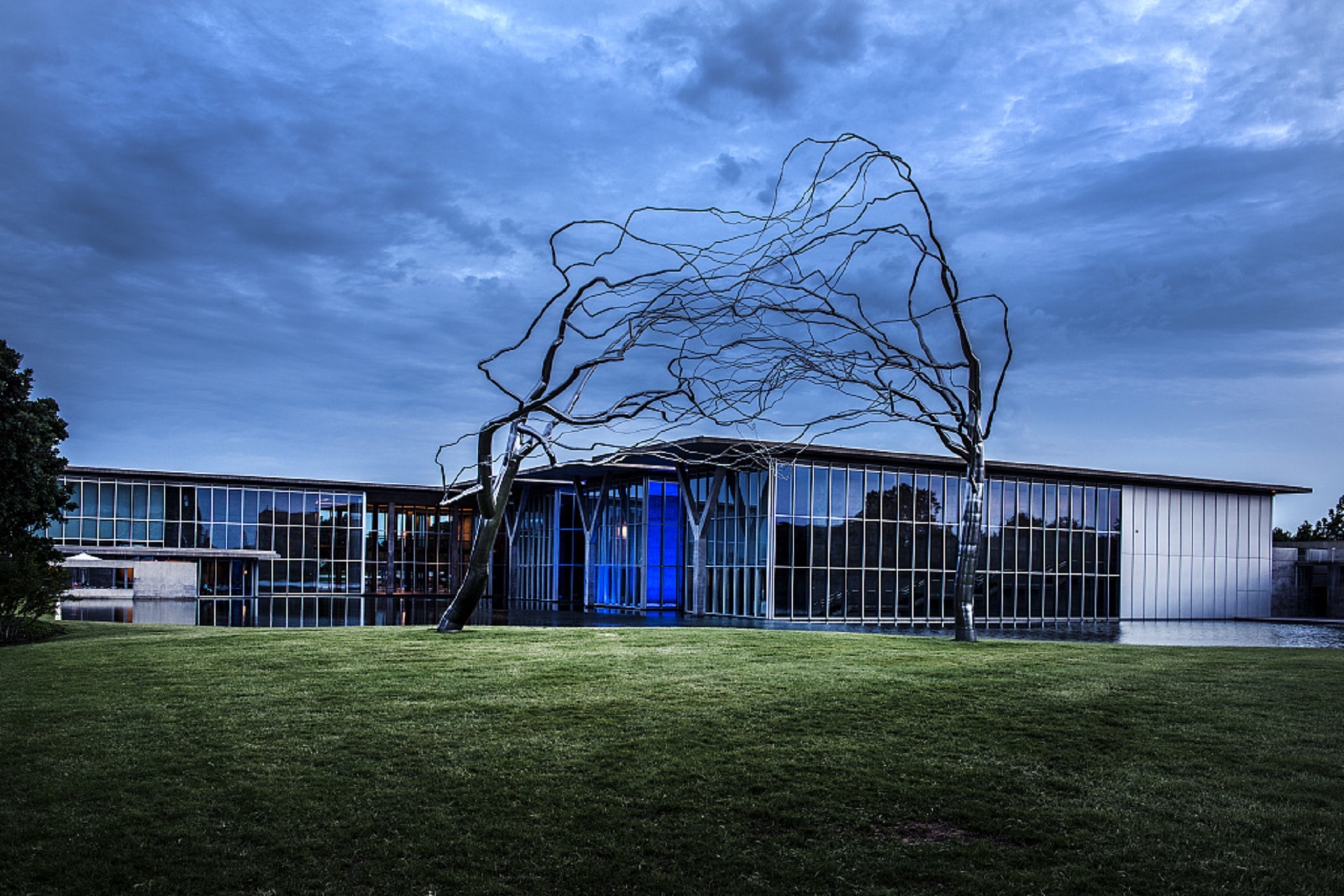
Fort Worth or Where the West Begins
June 23, 2014 — Blog
For those NewCities Summit attendees who opted to head the 30 miles or so West of Dallas to tour the cluster of institutions that make up Fort Worth’s Cultural District, most were unaware of the fact that Fort Worth’s cultural hub in several ways served as a partial model for what Dallas has recently created.
But that bit of history was probably the last thing on the minds of the 30 or so NewCities visitors who headed West to Fort Worth on the last official day of the Summit. They started out their morning by gazing upwards at Richard Serra’s towering Vortex sculpture that has become an unofficial symbol of the grand holdings of the Modern Art Museum of Fort Worth.
Anchoring the museum’s South-Western corner, Serra’s gargantuan steel spiraling sculpture was the dramatic kick-off point for an information-packed three-hour tour of two of the Fort Worth Cultural District’s main gems: The Modern Art Museum and the Kimbell Art Museum.
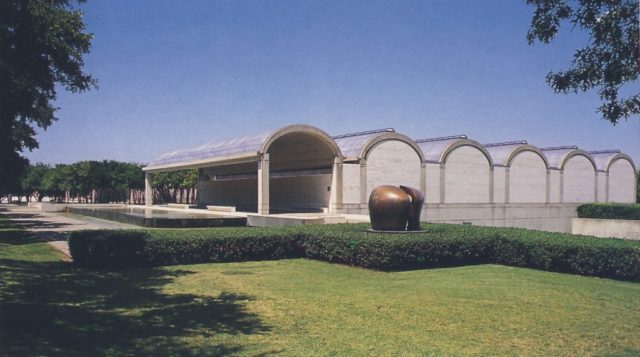
Both museums actually launched the Dallas-Fort Worth trend of a healthy, if undeclared, vigorous competition for the world’s A-list performing arts and museum architects. If Dallas now has iconic structures by Norman Foster and Rem Koolhaas, then the Summiteers finally were allowed to stroll among the walls and porticos of two equally renowned designers: The Modern’s Tadao Ando, and the Kimbell’s Louis Kahn.
Both museums [the Kimbell and the Modern Art Museum] actually launched the Dallas-Fort Worth trend of a healthy, if undeclared, vigorous competition for the world’s A-list performing arts and museum architects.
With the Dallas Architectural Forum’s Executive, Mark Gunderson, handling the tour’s design narrative duties, the NewCities Summit participants – most of whom had never been to Fort Worth at all – got a healthy dose of all the architectural similarities and differences between the Modern and the Kimbell’s structures. And it all starts with each of those building’s masterful and subtle artistry in concrete. At Ando’s Modern, and Kahn’s Kimbell, concrete metamorphoses into something more akin to silken marble.
At the Modern Art Museum of Fort Worth, it isn’t merely its colossal scale – as it measures some 150,000 square feet – but rather its delicate choreography of metal, stone, and, perhaps most lyrically, water to create a Zen-like Japanese garden aura.
The Summiteers, when not struck silent by the gently lapping Ando-designed interior pond, found the museum’s interior galleries to be imposing spaces all but lined with contemporary works in every imaginable media.
They quickly lined up to snap pictures of great works by Anselm Kiefer, especially his Book with Wings, which sits in its own perfectly tailored, elliptical gallery. But NewCities visitors seemed almost stunned in their collective tracks by the seemingly eternally elevating Ladder for Booker T. Washington by Martin Puryear. Ladder not only has its own gallery, but it actually occupies two floors of a single gallery, shooting up until it seems to get swallowed by the Modern’s ceiling. One of the site visit’s distinguished visitors, Ben Manyenyeni, the Mayor of Harare, Zimbabwe, playfully wanted to pose opposite the mirrored back wall that is part of a Rodin-esque statue by Michelangelo Pistoletto called The Etruscan.
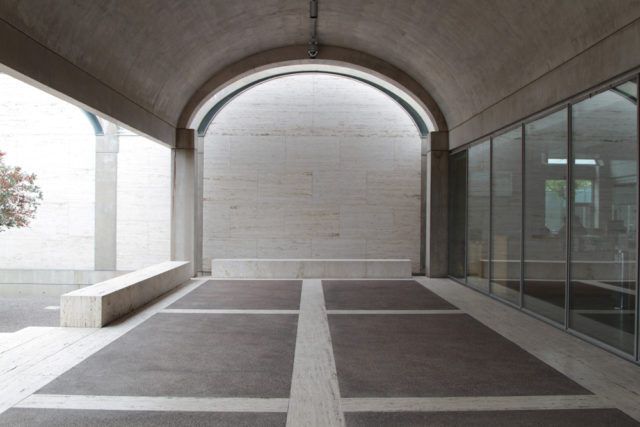
It was only a short four-minute stroll across a grass-lined sidewalk from the Modern Art Museum of Fort Worth to what some have dubbed the country’s “best small museum” – the Kimbell Art Museum.
Once there, Eric Lee, the museum’s director, led the NewCities visitors on a brisk, informative, one-hour tour of the museum’s greatest artistic hits. And what better place to start than with the painting that has, at least most recently, planted the Kimbell firmly on the map: Michelangelo’s first confirmed work as a painter, entitled The Torment of Saint Anthony. In the first of several anecdotes, Lee explained how the Kimbell got the inside track on the Michelangelo through its long-standing, and cordial, relationship with painting’s prior owner, the Metropolitan Museum of Art.
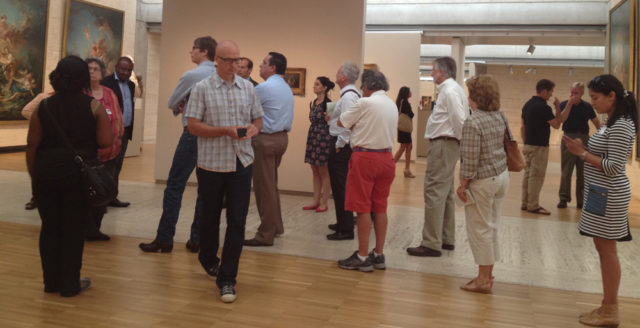
From the Michelangelo, Lee guided the NewCities visitors on a glorious tour of its well-edited holdings, from the majesty of Caravaggio’s the Cardsharps – perhaps the museum’s best known work, to the clear Caravaggio homage in Georges de La Tour’s Cheat with the Ace of Clubs, Poussin’s clear landmark work, Sacrament of Ordination, to a stunning trio of Spanish masterpieces by Velazquez, El Greco, and Murillo.
But director Lee wasn’t quite finished showing off some of the Kimbell’s choicest works. He all but flitted from Jacob van Ruisdael’s magisterial Edge of a Forest with a Grainfield, with its meticulously rendered lily pads and watery tree reflections, to J.M.W. Turner’s Glaucus and Scylla (a piece of Nazi-looted art that the Kimbell rapidly and dutifully returned to its rightful owners – before re-purchasing it from them again). Finally, Lee, could not resist having the NewCities visitors rest their art sated eyes on one of the museum’s few Matisse glories, a brightly colored tableau titled L’Asie or Asia.
And with that last work by Matisse, Kimbell museum director, Lee, re-passed the guide baton back to Gunderson, who then led the still eager New City visitors on the last leg of the Kimbell tour: Across a green sward full of water features, creamy stone steps, and the Kimbell’s classic stand of Yaupon hollies, the NewCities participants walked, stopping often to snap one cell phone shot after another.
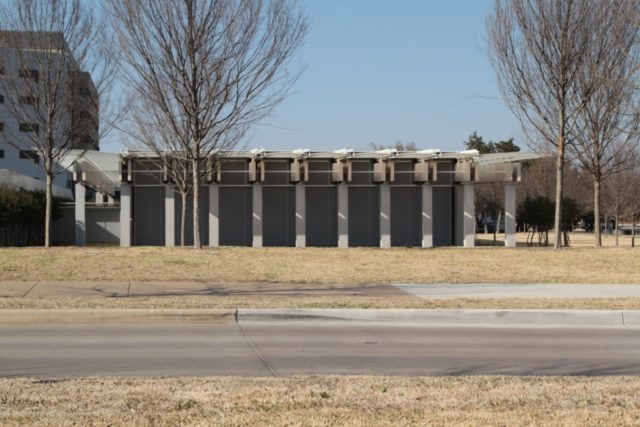
What awaited them on the other side of the lawn was the recently opened Renzo Piano Pavilion, named after the world-famous Italian architect who received the ultimate in challenging commissions: Create a distinctive museum annex to one of the world’s most revered, iconic museums that neither obscures the great Louis Kahn Kimbell, nor goes into its own obscurity as a blandly utilitarian structure.
After entering the light-drenched lobby of the Piano Pavilion, the NewCities participants wandered into a gallery full of pre-Columbian treasures, followed by a visit of the Kimbell’s current exhibition on the art of the Samurai armor.
Three hours after they first alighted from their tour bus onto the pavements of Fort Worth, the NewCities visitors had become unanimously boosterish for Fort Worth’s individual cultural holdings and, as importantly, how it contributes to the overall new urban fabric of a Metroplex that starts with Big Dallas on the East, and ends where the West begins.